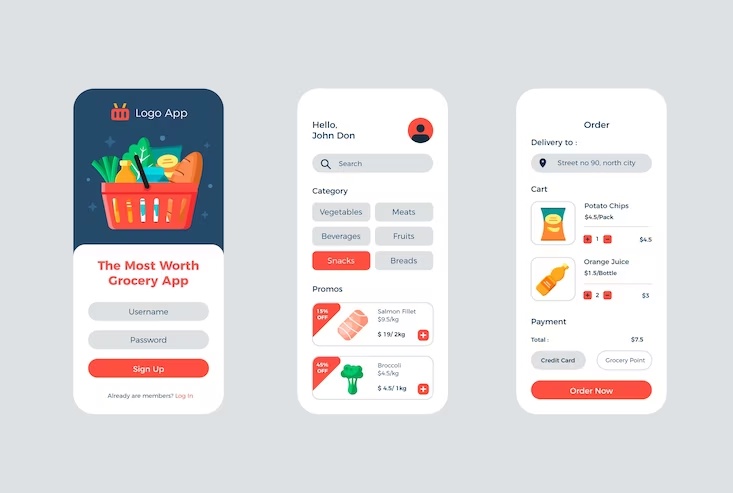The grocery industry has undergone a significant transformation with the advent of technology, particularly through the development of grocery apps. These apps have revolutionized the way people shop for groceries by offering convenience, personalized experiences, and efficient order processing. However, the journey of creating a successful grocery app comes with its own set of challenges. In this article, we will delve into some of the key challenges faced by developers in the process of grocery app development.
-
User Experience and Interface Design: One of the primary challenges in grocery app development is designing a user-friendly interface that caters to a wide range of users, from tech-savvy individuals to those who are less familiar with technology. The app's interface should be intuitive, easy to navigate, and visually appealing. Balancing aesthetics with functionality is crucial to ensure that users can quickly find products, add them to their carts, and complete the checkout process seamlessly.
-
Data Integration and Real-Time Updates: Grocery apps require real-time synchronization of inventory, prices, and product availability across various stores. Achieving seamless data integration from multiple sources can be complex, as it involves integrating with the backend systems of different grocery chains. Inaccurate or delayed data can lead to frustrated customers, incorrect orders, and negative reviews.
-
Performance and Scalability: As the user base grows, the app should be able to handle increased traffic without slowing down or crashing. Performance issues can lead to abandoned carts and dissatisfied users. Ensuring scalability is essential to accommodate peak demand periods, such as holidays or weekends, when there's a surge in orders.
-
Personalization and Recommendations: Many users expect personalized experiences from apps, including grocery apps. Developing algorithms that analyze user behavior and preferences to offer relevant product recommendations can be challenging. Striking the right balance between offering helpful suggestions and avoiding being overly intrusive is key.
-
Payment and Security: Implementing secure payment gateways to handle sensitive financial information is a critical aspect of grocery app development. Ensuring compliance with industry standards and regulations, such as PCI DSS (Payment Card Industry Data Security Standard), is vital to protect user data and build trust.
-
Location-Based Services: Grocery apps often rely on location-based services to provide users with information about nearby stores, delivery options, and estimated arrival times. Integrating accurate geolocation services and maintaining them across various devices and operating systems can be complex.
-
Order Fulfillment and Logistics: Managing the logistics of order fulfillment, including inventory management, packing, and delivery, poses a significant challenge. Efficiently coordinating with various stakeholders, such as stores, warehouses, and delivery personnel, is crucial to ensure timely and accurate deliveries.
-
Customer Support and Communication: In-app customer support features are essential for addressing user queries, resolving issues, and providing assistance throughout the shopping process. Developing a robust communication system that allows customers to reach out easily and receive timely responses can be demanding.
-
Offline Functionality: While grocery apps heavily rely on internet connectivity, incorporating offline functionality is important to enhance user experience. Allowing users to browse products and create shopping lists offline can be challenging, as it requires efficient synchronization when the device regains connectivity.
-
Regulatory and Compliance Challenges: Grocery apps need to adhere to various regulations related to food safety, labeling, and allergen information. Ensuring that the app provides accurate and up-to-date information while complying with legal requirements can be intricate.
-
User Trust and Reviews: Building and maintaining user trust is paramount. Negative reviews, especially related to incorrect orders, late deliveries, or technical glitches, can significantly impact the app's reputation. Continuously monitoring and addressing user feedback is essential for app improvement.
Conclusion:
The development of a successful grocery app is a multifaceted endeavor that requires addressing a wide array of challenges. From designing an intuitive user interface to ensuring data accuracy, security, and scalability, developers must navigate through various complexities. Overcoming these challenges requires a combination of technical expertise, strategic planning, and a deep understanding of user behavior and preferences. By recognizing and proactively addressing these challenges, developers can create grocery apps that offer a seamless, convenient, and delightful shopping experience for users.


No comments yet